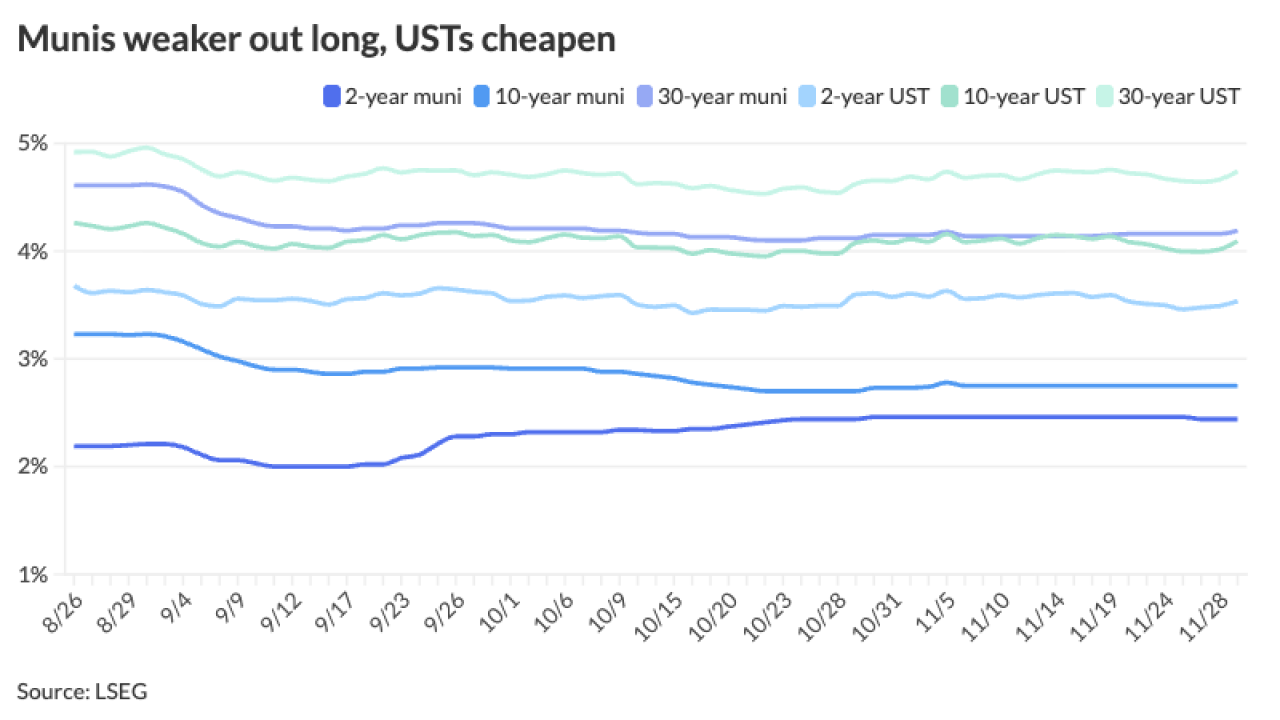Debate over tolling on Connecticut’s highways is just as harried as the traffic conditions on them.
As the legislative session in Hartford enters the homestretch, lawmakers in the politically divided state are considering a variety of measures to resume tolls with a more expansive reach than in the past, as the state weighs how to fix crumbling infrastructure amid ongoing revenue and debt challenges.

The target roadways in the now toll-free state are interstates 84, 91 and 95, and the Merritt Parkway. Connecticut’s three neighbors, New York, Massachusetts and Rhode Island, all have some kind of tolling mechanism.
Gov. Ned Lamont, a Democrat, has his own plan. Separate bills are pending the Senate and House of Representatives, and the minority Republicans have their own “
Connecticut abolished tolls in the 1980s after a fatal accident at the Stratford toll gate along I-95 generated a backlash.
The state’s economy, budget strife and capital-markets standing provide a backdrop for renewed discussion.
Connecticut received across-the-board downgrades in 2017, citing its debt and legacy obligations. Moody’s Investors Service rates Connecticut’s general obligation bonds A1, while Fitch Ratings rates them A-plus. Kroll Bond Ratings Agency assigns its AA-minus rating. Kroll assigns a negative outlook, while outlooks from Moody's and Fitch are stable.
In March, however, S&P Global Ratings changed its outlook to positive from stable on its A rating of Connecticut. It marked the first upward tweak to Connecticut's GO rating since 2001.
The Connecticut debate is part of a national discussion over use of public roads and how to finance mass transit. New York City intends to implement congestion pricing, which supporters say could generate up to $15 billion through bonding for the city’s subways and buses, while Los Angeles, Philadelphia and other cities are considering it.
Kate Slevin, a senior vice president at New York-based think tank Regional Plan Association, said RPA favors congestion pricing, highway tolling in New York’s neighboring states and a price-per-mile mechanism.
“Our gas tax revenues are dwindling and we’re going to need new revenues to support those,” Slevin said.
According to state Sen. Alexandra Bergstein, D-Greenwich, tolling is the only viable solution for Connecticut.
“The only other option on the table is just issuing more bonds, which is just issuing more debt,” she said during the RPA's annual summit in New York. “We already have the highest debt per capita in the nation.”
Bergstein said borrowing over 30 years that Republicans have proposed could spiral to $10.5 trillion of debt.
“It’s just a terrible idea,” she said.
While Republicans are unified against tolling, majority Democrats are divided.
Under the GOP plan, the state would reserve a set amount of general obligation bonds for transportation priorities, beginning with a commitment of $703.7 million in calendar year 2020. It would also preserve special tax obligation bonds dedicated to transportation and re-establish the Transportation Strategy Board to work alongside the state Department of Transportation to assess proposed projects.
Republican leaders say the state taxes its residents enough already.
“What we have seem in the past three months of session new taxes on almost anything you can find,” said House Minority Leader Themis Klarides, R-Derby.
“We have a cat tax, a non-prescription drug tax; there’s textbooks, newspapers, anything you can find. Tolls are just another way to take money out of your pocket. And unfortunately people in this state are sick of it. That’s why people in this state are moving and that’s why they cannot afford to live here.”
She also accused Democrats of moving the goalposts.

“They have been looking at tolls for four years and every week it changes.”
Lamont, who took office in January, said his plan would generate $800 million in revenue assuming completion of the gantries no earlier than 2022. State officials have begged the initial cost at $213 million.
The House bill would commission a transportation authority to determine the tolls and locations for the gantries where cameras would be mounted for open-road tolling, while the Senate version would assign lawmakers that task.
“It’s a heated debate. I think it hasn’t really been framed well,” Bergstein said. “People don’t fully understand what the cost of not having tolls is. Of course, nobody wants to pay more for what they think they’re getting for free. But it’s not for free.
“The cost of not having a tolling system is a failing economy, failing bridges. Eventually it’s going to be failing schools because the money for transportation has to come from someplace and if we’re restricting it to our general obligation fund, there’s not enough.”





